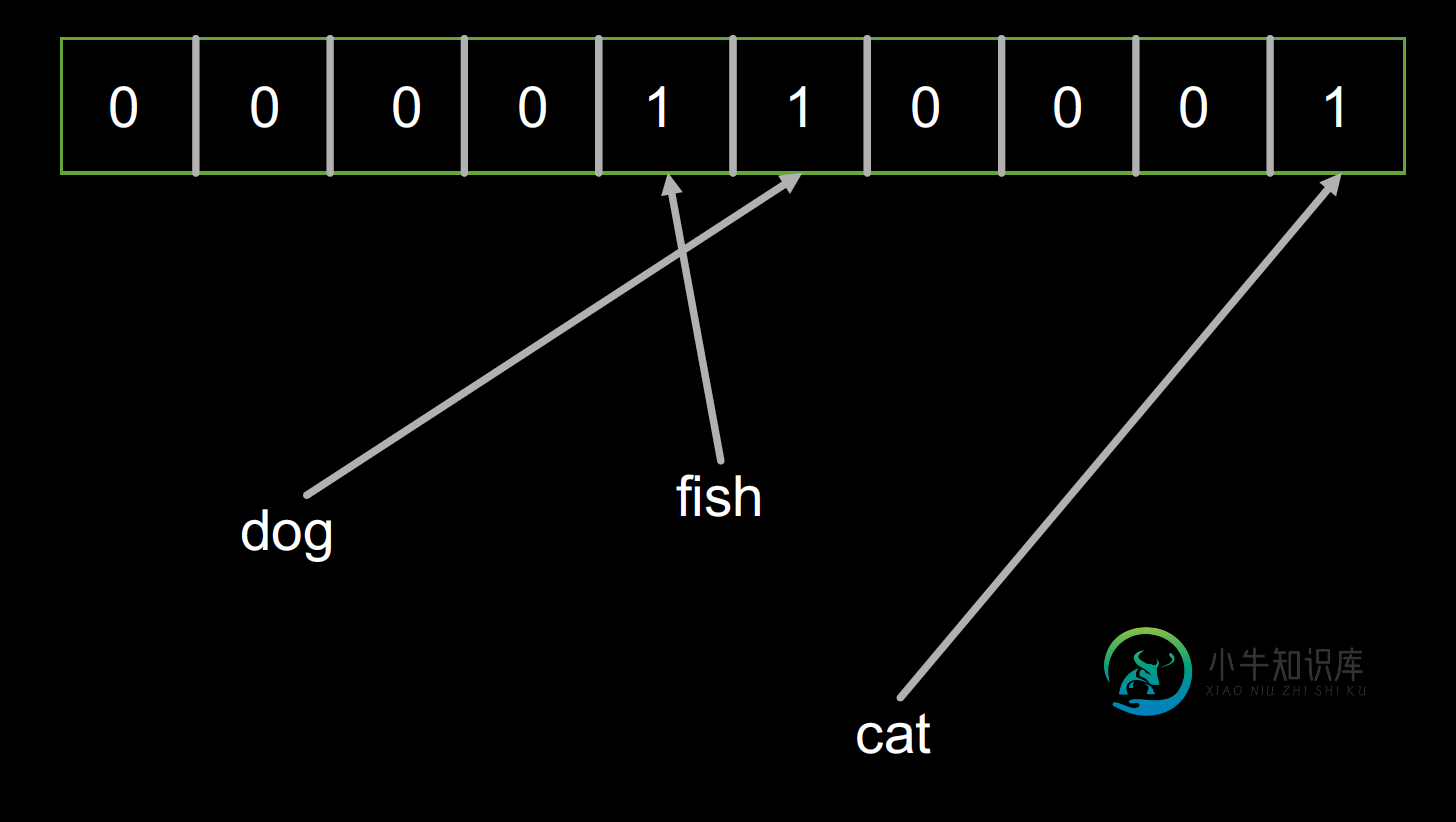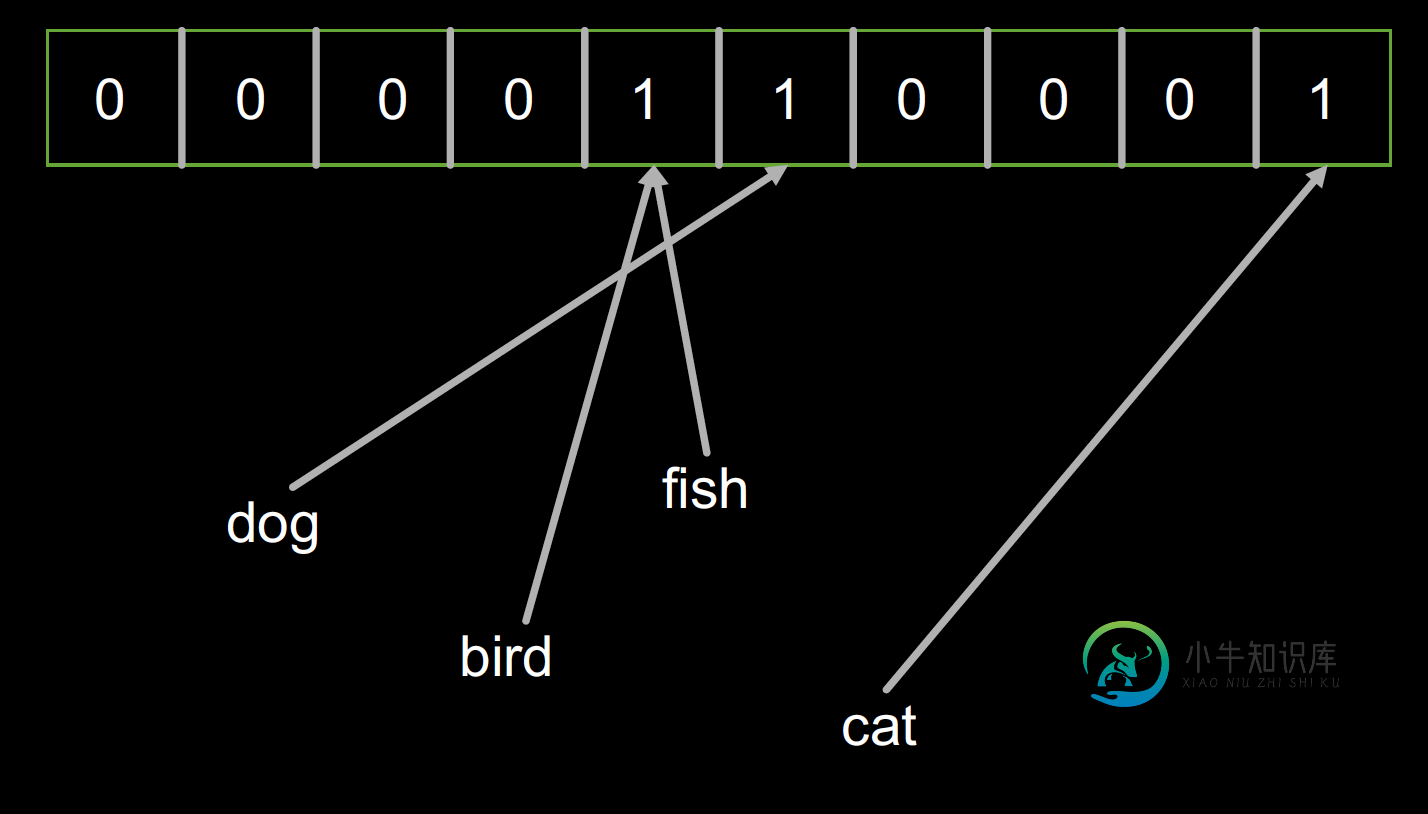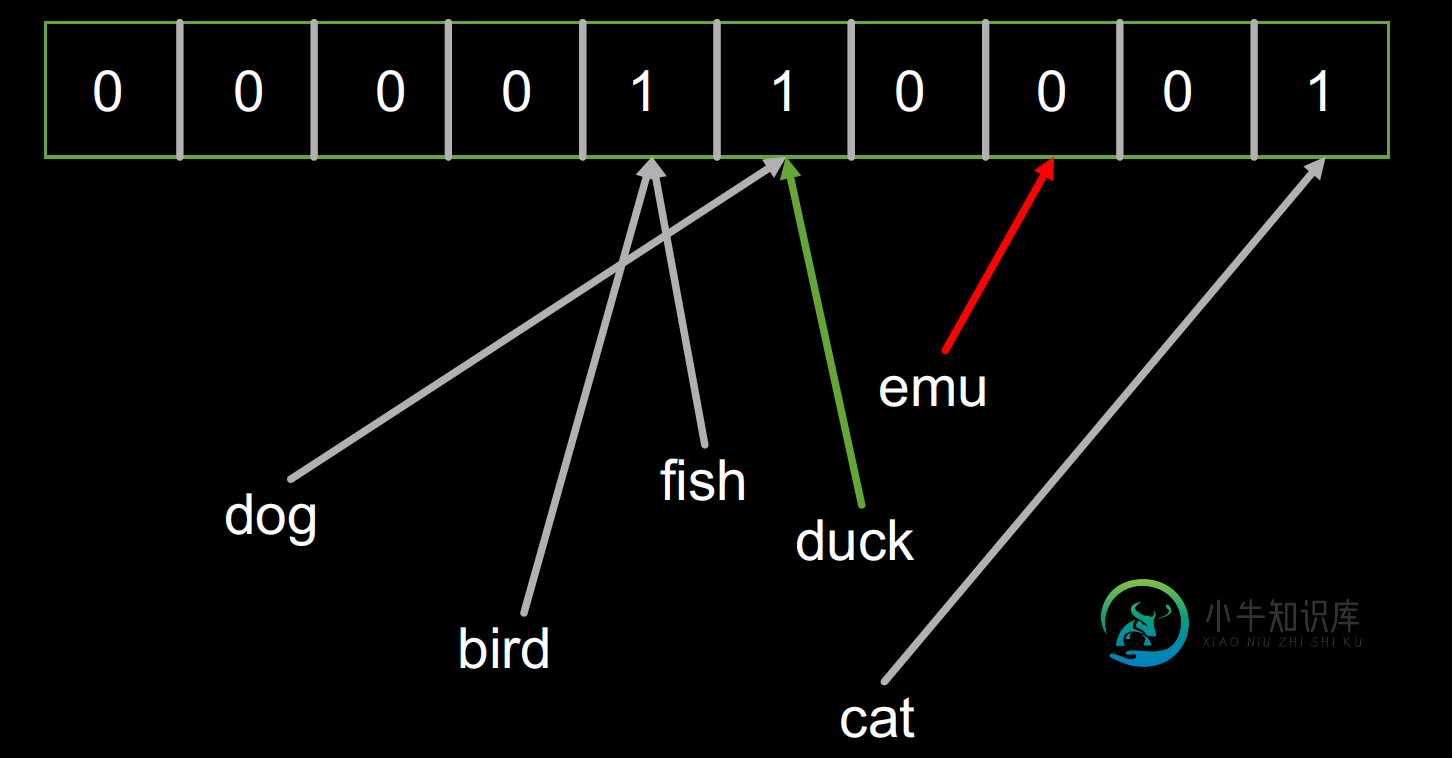Python搜索引擎实现原理和方法
如何在庞大的数据中高效的检索自己需要的东西?本篇内容介绍了Python做出一个大数据搜索引擎的原理和方法,以及中间进行数据分析的原理也给大家做了详细介绍。
布隆过滤器 (Bloom Filter)
第一步我们先要实现一个布隆过滤器。
布隆过滤器是大数据领域的一个常见算法,它的目的是过滤掉那些不是目标的元素。也就是说如果一个要搜索的词并不存在与我的数据中,那么它可以以很快的速度返回目标不存在。
让我们看看以下布隆过滤器的代码:
class Bloomfilter(object):
"""
A Bloom filter is a probabilistic data-structure that trades space for accuracy
when determining if a value is in a set. It can tell you if a value was possibly
added, or if it was definitely not added, but it can't tell you for certain that
it was added.
"""
def __init__(self, size):
"""Setup the BF with the appropriate size"""
self.values = [False] * size
self.size = size
def hash_value(self, value):
"""Hash the value provided and scale it to fit the BF size"""
return hash(value) % self.size
def add_value(self, value):
"""Add a value to the BF"""
h = self.hash_value(value)
self.values[h] = True
def might_contain(self, value):
"""Check if the value might be in the BF"""
h = self.hash_value(value)
return self.values[h]
def print_contents(self):
"""Dump the contents of the BF for debugging purposes"""
print self.values
基本的数据结构是个数组(实际上是个位图,用1/0来记录数据是否存在),初始化是没有任何内容,所以全部置False。实际的使用当中,该数组的长度是非常大的,以保证效率。
利用哈希算法来决定数据应该存在哪一位,也就是数组的索引
当一个数据被加入到布隆过滤器的时候,计算它的哈希值然后把相应的位置为True
当检查一个数据是否已经存在或者说被索引过的时候,只要检查对应的哈希值所在的位的True/Fasle
看到这里,大家应该可以看出,如果布隆过滤器返回False,那么数据一定是没有索引过的,然而如果返回True,那也不能说数据一定就已经被索引过。在搜索过程中使用布隆过滤器可以使得很多没有命中的搜索提前返回来提高效率。
我们看看这段 code是如何运行的:
bf = Bloomfilter(10)
bf.add_value('dog')
bf.add_value('fish')
bf.add_value('cat')
bf.print_contents()
bf.add_value('bird')
bf.print_contents()
# Note: contents are unchanged after adding bird - it collides
for term in ['dog', 'fish', 'cat', 'bird', 'duck', 'emu']:
print '{}: {} {}'.format(term, bf.hash_value(term), bf.might_contain(term))
结果:
[False, False, False, False, True, True, False, False, False, True] [False, False, False, False, True, True, False, False, False, True] dog: 5 True fish: 4 True cat: 9 True bird: 9 True duck: 5 True emu: 8 False
首先创建了一个容量为10的的布隆过滤器

然后分别加入 ‘dog',‘fish',‘cat'三个对象,这时的布隆过滤器的内容如下:

然后加入‘bird'对象,布隆过滤器的内容并没有改变,因为‘bird'和‘fish'恰好拥有相同的哈希。

最后我们检查一堆对象('dog', ‘fish', ‘cat', ‘bird', ‘duck', 'emu')是不是已经被索引了。结果发现‘duck'返回True,2而‘emu'返回False。因为‘duck'的哈希恰好和‘dog'是一样的。

分词
下面一步我们要实现分词。 分词的目的是要把我们的文本数据分割成可搜索的最小单元,也就是词。这里我们主要针对英语,因为中文的分词涉及到自然语言处理,比较复杂,而英文基本只要用标点符号就好了。厦门叉车
下面我们看看分词的代码:
def major_segments(s):
"""
Perform major segmenting on a string. Split the string by all of the major
breaks, and return the set of everything found. The breaks in this implementation
are single characters, but in Splunk proper they can be multiple characters.
A set is used because ordering doesn't matter, and duplicates are bad.
"""
major_breaks = ' '
last = -1
results = set()
# enumerate() will give us (0, s[0]), (1, s[1]), ...
for idx, ch in enumerate(s):
if ch in major_breaks:
segment = s[last+1:idx]
results.add(segment)
last = idx
# The last character may not be a break so always capture
# the last segment (which may end up being "", but yolo)
segment = s[last+1:]
results.add(segment)
return results
主要分割
主要分割使用空格来分词,实际的分词逻辑中,还会有其它的分隔符。例如Splunk的缺省分割符包括以下这些,用户也可以定义自己的分割符。
] < >( ) { } | ! ; , ‘ ” * \n \r \s \t & ? + %21 %26 %2526 %3B %7C %20 %2B %3D — %2520 %5D %5B %3A %0A %2C %28 %29
def minor_segments(s):
"""
Perform minor segmenting on a string. This is like major
segmenting, except it also captures from the start of the
input to each break.
"""
minor_breaks = '_.'
last = -1
results = set()
for idx, ch in enumerate(s):
if ch in minor_breaks:
segment = s[last+1:idx]
results.add(segment)
segment = s[:idx]
results.add(segment)
last = idx
segment = s[last+1:]
results.add(segment)
results.add(s)
return results
次要分割
次要分割和主要分割的逻辑类似,只是还会把从开始部分到当前分割的结果加入。例如“1.2.3.4”的次要分割会有1,2,3,4,1.2,1.2.3
def segments(event):
"""Simple wrapper around major_segments / minor_segments"""
results = set()
for major in major_segments(event):
for minor in minor_segments(major):
results.add(minor)
return results
分词的逻辑就是对文本先进行主要分割,对每一个主要分割在进行次要分割。然后把所有分出来的词返回。
我们看看这段 code是如何运行的:
for term in segments('src_ip = 1.2.3.4'):
print term
src 1.2 1.2.3.4 src_ip 3 1 1.2.3 ip 2 = 4
搜索
好了,有个分词和布隆过滤器这两个利器的支撑后,我们就可以来实现搜索的功能了。
上代码:
class Splunk(object):
def __init__(self):
self.bf = Bloomfilter(64)
self.terms = {} # Dictionary of term to set of events
self.events = []
def add_event(self, event):
"""Adds an event to this object"""
# Generate a unique ID for the event, and save it
event_id = len(self.events)
self.events.append(event)
# Add each term to the bloomfilter, and track the event by each term
for term in segments(event):
self.bf.add_value(term)
if term not in self.terms:
self.terms[term] = set()
self.terms[term].add(event_id)
def search(self, term):
"""Search for a single term, and yield all the events that contain it"""
# In Splunk this runs in O(1), and is likely to be in filesystem cache (memory)
if not self.bf.might_contain(term):
return
# In Splunk this probably runs in O(log N) where N is the number of terms in the tsidx
if term not in self.terms:
return
for event_id in sorted(self.terms[term]):
yield self.events[event_id]
Splunk代表一个拥有搜索功能的索引集合
每一个集合中包含一个布隆过滤器,一个倒排词表(字典),和一个存储所有事件的数组
当一个事件被加入到索引的时候,会做以下的逻辑
为每一个事件生成一个unqie id,这里就是序号
对事件进行分词,把每一个词加入到倒排词表,也就是每一个词对应的事件的id的映射结构,注意,一个词可能对应多个事件,所以倒排表的的值是一个Set。倒排表是绝大部分搜索引擎的核心功能。
当一个词被搜索的时候,会做以下的逻辑
检查布隆过滤器,如果为假,直接返回
检查词表,如果被搜索单词不在词表中,直接返回
在倒排表中找到所有对应的事件id,然后返回事件的内容
我们运行下看看把:
s = Splunk()
s.add_event('src_ip = 1.2.3.4')
s.add_event('src_ip = 5.6.7.8')
s.add_event('dst_ip = 1.2.3.4')
for event in s.search('1.2.3.4'):
print event
print '-'
for event in s.search('src_ip'):
print event
print '-'
for event in s.search('ip'):
print event
src_ip = 1.2.3.4 dst_ip = 1.2.3.4 - src_ip = 1.2.3.4 src_ip = 5.6.7.8 - src_ip = 1.2.3.4 src_ip = 5.6.7.8 dst_ip = 1.2.3.4
是不是很赞!
更复杂的搜索
更进一步,在搜索过程中,我们想用And和Or来实现更复杂的搜索逻辑。
上代码:
class SplunkM(object):
def __init__(self):
self.bf = Bloomfilter(64)
self.terms = {} # Dictionary of term to set of events
self.events = []
def add_event(self, event):
"""Adds an event to this object"""
# Generate a unique ID for the event, and save it
event_id = len(self.events)
self.events.append(event)
# Add each term to the bloomfilter, and track the event by each term
for term in segments(event):
self.bf.add_value(term)
if term not in self.terms:
self.terms[term] = set()
self.terms[term].add(event_id)
def search_all(self, terms):
"""Search for an AND of all terms"""
# Start with the universe of all events...
results = set(range(len(self.events)))
for term in terms:
# If a term isn't present at all then we can stop looking
if not self.bf.might_contain(term):
return
if term not in self.terms:
return
# Drop events that don't match from our results
results = results.intersection(self.terms[term])
for event_id in sorted(results):
yield self.events[event_id]
def search_any(self, terms):
"""Search for an OR of all terms"""
results = set()
for term in terms:
# If a term isn't present, we skip it, but don't stop
if not self.bf.might_contain(term):
continue
if term not in self.terms:
continue
# Add these events to our results
results = results.union(self.terms[term])
for event_id in sorted(results):
yield self.events[event_id]
利用Python集合的intersection和union操作,可以很方便的支持And(求交集)和Or(求合集)的操作。
运行结果如下:
s = SplunkM()
s.add_event('src_ip = 1.2.3.4')
s.add_event('src_ip = 5.6.7.8')
s.add_event('dst_ip = 1.2.3.4')
for event in s.search_all(['src_ip', '5.6']):
print event
print '-'
for event in s.search_any(['src_ip', 'dst_ip']):
print event
src_ip = 5.6.7.8 - src_ip = 1.2.3.4 src_ip = 5.6.7.8 dst_ip = 1.2.3.4
-
Spider 抓取系统的基本框架 互联网信息爆发式增长,如何有效的获取并利用这些信息是搜索引擎工作中的首要环节。数据抓取系统作为整个搜索系统中的上游,主要负责互联网信息的搜集、保存、更新环节,它像蜘蛛一样在网络间爬来爬去,因此通常会被叫做 “spider”。例如我们常用的几家通用搜索引擎蜘蛛被称为:Baiduspdier、Googlebot、Sogou Web Spider 等。 Spider 抓
-
搜索引擎分为两部分: 时间筛选 和 搜索引擎 (详情) 1.时间筛选 便捷按钮有今日、昨日、前日、上周 X、近七天,并且能自定义选择时间段来得出想要的结果报表 2.搜索引擎 (时间段详情) 选择日期,查看来自对应时间段内,各个搜索引擎的访问量比例
-
lucene 和 es 的前世今生 lucene 是最先进、功能最强大的搜索库。如果直接基于 lucene 开发,非常复杂,即便写一些简单的功能,也要写大量的 Java 代码,需要深入理解原理。 elasticsearch 基于 lucene,隐藏了 lucene 的复杂性,提供了简单易用的 restful api / Java api 接口(另外还有其他语言的 api 接口)。 分布式的文档存储
-
搜索引擎 关键参数 报告 method metrics(指标, 数据单位) 其他参数 搜索引擎 source/engine/a pv_count (浏览量(PV)) pv_ratio (浏览量占比,%) visit_count (访问次数) visitor_count (访客数(UV)) new_visitor_count (新访客数) new_visitor_ratio (新访客比率,%) ip
-
更改历史 * 2018-05-07 胡小根 初始化文档 1 历史、现状和发展 1.1 历史 1.2 现状 1.3 发展 难点:预测发展方向。 2 安装和使用 2.1 安装 2.2 使用 创建index和type 上传单条数据 批量上传数据 查询 2.3 示例 2.4 最佳实践 难点:最佳实践,超出于示例,应该归纳总结出积累的技巧。 3 同类技术对比 难点:归纳比对项 参考资料 El
-
元搜索引擎 原搜索引擎是通过一个统一的用户界面帮助用户在多个搜索引擎中选择和利用合适的搜索引擎来实现检索操作,是对分布于网络的多种检索工具的全局控制机制。 自己没搜索引擎,又想要大规模的数据源,怎么办?可以对百度搜索和谷歌搜索善加利用,以小搏大,站在巨人的肩膀上。有很多的应用场景可以很巧妙地借助百度搜索和谷歌搜索来实现,比如网站的新闻采集,比如技术、品牌的新闻跟踪,比如知识库的收集,比如人机问答系

